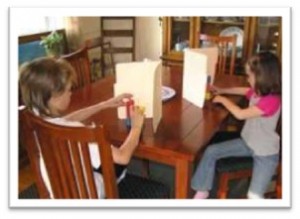 This is a great activity and it really shows how hard it is to communicate with someone. It does a great job at pointing out assumptions and showing how careful and detailed you have to be with your instructions. It also shows that the listener has an important role to play. The listener must be very careful not to make assumptions and to be sure to take responsibility for what they are hearing by asking good questions.
This is a great activity and it really shows how hard it is to communicate with someone. It does a great job at pointing out assumptions and showing how careful and detailed you have to be with your instructions. It also shows that the listener has an important role to play. The listener must be very careful not to make assumptions and to be sure to take responsibility for what they are hearing by asking good questions.
One more thing this activity does is show how important definitions are to good communication. When I do this activity with my groups, I do it a few times and then take the time to point out some of the definitions the group has been using. For example, when they call one block the red square everyone knows which block that is. I also point out where a definition can come in handy.
For example “Stand the blue block on its side.” Well, which side? Long side, short side, fat side… how do you know? At this point, I take the time with the group to create definitions. “Okay, so when we say long side that always means this side of this block.” As you do this activity, you’ll see where assumptions are made and definitions can come in handy. In science, good definitions are vital. If somebody says, “I put the apparatus one meter from the ping pong ball.” Everyone in the world knows how far a meter is. There is a standard for meters, inches, cups, liters, ohms, joules and all sorts of measurements. Without good definitions no one would know what anyone was talking about!
Please login or register to read the rest of this content.
